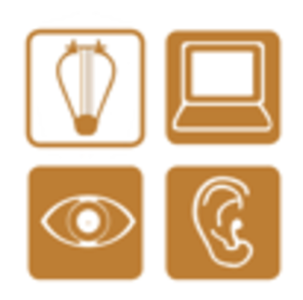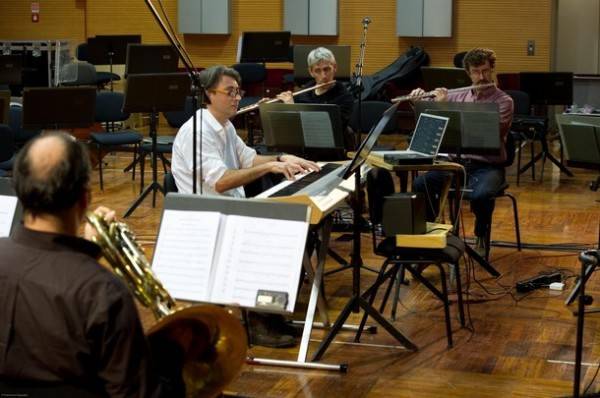The Lost Sounds Orchestra is a music ensemble that exists to play only music that has been long lost from the collective memory of our cultures. It seems like a contradiction in terms. But the LSO is an outgrowth of the ASTRA Project, a group which has developed a computer modelling system that allows researchers to generate the sounds that ancient instruments made. So if an archaeologist finds a battered ancient instrument, ASTRA can figure out how it sounded and Lost Sounds can make it sing again.

We spoke with Domenico Vicinanza about the confluence of Web-based computing, archaeology and modern performance. Vicinanza is the ASTRA Project Coordinator and the Lost Sounds Orchestra Technical Coordinator. He also works as a Project Support Officer at DANTE, the organization building and operating GEANT, the pan-European research and education network backbone. Within ASTRA and LSO, Vicinanza leads the team of researchers reconstructing ancient instruments and acts as liaison with archaeologists, musicians and engineers.

Domenico Vicinanza: The ReadWriteWeb Interview
Can you describe the differences, and dialog, between ASTRA and LSO? What are its different goals, what goals do they share?
The Lost Sound Orchestra is the ASTRA project orchestra. It is a unique orchestra made by reconstructed ancient instrument coming from the ASTRA research activities. In other words, ASTRA covers the scientific aspect of sound reconstruction, from the raw data coming from literature and archaeology to the sounds. The Lost Sounds Orchestra deals with the artistic side, it starts from the sounds reconstructed by ASTRA and uses them to play music, organize concerts and teaching music students how to compose, play and arrange for an ancient ensemble.
How much do performances use samples and how much original or reconstructed instruments?
During our performance, our reconstructed instruments are completely relying on digital sounds coming from the reconstruction process. The samples are computed on the European Grid Initiative infrastructure, using the GÉANT network, and then pre-loaded in a laptop connected to the MIDI controller.
What’s the utility, cultural or otherwise, of recreating ancient music?
Recreating ancient instruments which no longer physically exist is a wonderful multi-disciplinary challenge for historians, archaeologists, physicists, engineers and computer scientists. Listening to them is like jumping into the past, into a sound world completely new to our ears.
Much of what defines western European culture in terms of music, philosophy, science and the arts has its origins in the culture of Ancient Greece. Music played a fundamental role in the lives of Ancient Greeks and was almost universally present in society, from marriages and funerals to religious ceremonies, staged dramas, folk music and the ballad-like reciting of epic poetry.
The Ancient Greeks had developed a complex system of relating particular emotional and spiritual characteristics to certain organizations of sounds, called modes (or scales). The names for the various modes derived from the names of Greek tribes and peoples, the temperament and emotions of which were said to be characterized by the unique sound of each mode. Thus, Dorian modes were “harsh”, Phrygian modes “sensual”, and so forth.
Plato, in his writings, talks about the proper use of various scales. To our ears it is quite difficult to relate to that concept of ethos in music except by comparing our own perceptions that a minor scale is used for melancholy and a major scale for virtually everything else, from happy to heroic music.
From a technical point of view, the sound of scales vary depending on the placement of whole tones, they are C to D on a modern piano keyboard, and half tones, which are C to C-sharp. Where modern Western music distinguishes between relatively few kinds of scales, the Greeks used this placement of whole-tones, half-tones, and even quarter-tones (“in the cracks” on a modern keyboard) to develop a large repertoire of scales, each with a presumed ethos.
The first instrument we reconstructed was then a Greek instrument, the monochord. It was one of the oldest and simplest musical instruments, played by Pythagoras. The word “monochord” comes from the Greek and means literally “one string.” In the monochord, a single string is stretched over a sound box. The string is fixed at both ends while a moveable bridge alters the pitch.
After the monochord, we moved to the first real, complex instrument: the epigonion. The epigonion was an ancient stringed instrument mentioned in Athenaeus (183 A.D.), and was a bit like a modern harp or a psaltery. The epigonion was invented, or at least introduced into Greece, by Epigonus of Ambracia, a Greek musician of Ambracia in Epirus, who was granted citizenship at Sicyon in recognition of his great musical ability and because he was the first to pluck the strings with his fingers, instead of using a plectrum. The instrument, which Epigonus named after himself, had forty strings.
Next page: Virtual reconstruction based on modelling
Reconstructing the instrument using a virtual model (instead of just making a modern physical copy of it) was an additional cultural challenge. We opted for a virtual reconstruction based on modelling because it had the advantage of making it easy to build sound libraries that students, researchers and museums can easily access and use everywhere in the world. In this way we could allow everybody to load the sounds onto a PC, plug in a keyboard and play. Reconstructing just one epigonion would have meant that just one instrument was available for studying purposes.
Finally using virtually reconstructed instruments in a modern environment was the final challenge. We played ancient instruments alongside modern ones, we started arranging and writing for ancient instruments using different techniques (faithful to the Ancient Greek tuning and harmony or using modern well temperament) and use them live on stage during real concerts
We are currently mostly focusing on reconstructing instruments but an increasing fraction of our time is moving towards a more complex research regarding music archaeology facilitated by modern technologies. We are extremely interested in understanding how the instrument sounded in their ancient natural environment (rooms, theatres, and open space) and we are using advanced networking and advanced distributed computation to refine our models to correctly describe and map ancient materials, mimic construction techniques, size and shapes of rooms where the instrument was typically played.
Is this project a function of new technologies? Have their been any forerunners?
Ever since the first computers appeared at research centers, universities and radio stations, they have drawn the attention of musicians towards new ways of writing music, of creating sounds. When networks started to link computers together, the possibilities became wider and even more fascinating: thousands of PCs spread around the world could work together to generate sounds, to create music.
Many countries around the world have a special dedicated network called a National Research and Education Network, which is separate from the internet people use at home. These networks provide extremely reliable access to high bandwidth so that researchers can communicate, transfer data and perform all sorts of fascinating projects and avoid the congestion of the commercial internet. But scientists often want to link up with researchers in other parts of the world, and so there are networks which link up the national networks. The network for Europe is called GÉANT and it is this network which is used to recreate the sounds of the epigonion.
The calculations used to recreate the epigonion and the other ASTRA instruments required reliable access to high bandwidth and this is why we had to use networks like GÉANT and distributed computing infrastructure like the European Grid Initiative.
Another important role of advanced networking was bringing experiences and knowledge together. Imagine having an archaeologist working in Greece with many interesting relics and findings, a group of engineers in Italy, a software developer in France, an historian in Morocco: using the network within our project ASTRA, they had the possibility to interact and co-operate, adding experiences and creating something unique.
What function does the Web serve in your efforts?
The web was an extremely important ingredient. The interface to the computing Grid infrastructure is web-based and we can allow researchers and students to have access to the full power of the reconstruction engine just using a web browser, without having to install software or maintain hardware. We are also relying on the web to immediately publish the outcomes of our research, distribute the results the results so that they can be made available to a large community of users immediately using dedicated R&E networking.
Your site talks about how the project started in 2009. What has the orchestra done in that intervening time?
In two years and a half, we moved from just one instrument (the epigonion) to a small ensemble of four, two Greek instruments and two Latin American ones (epigonion, barbiton, tambór and quena de hueso).
Last year, the project worked together with the Museo de Arte Precolombino (Santiago, Chile) on the reconstruction of two ancient musical instruments (quena de hueso and tambór) from Pre-Colombian Latin America . The quena de hueso (literelly bone flute) was a traditional flute of the Andes belonging to the Nasca culture (southern Peru). The tambór (drum) was a percussion belonging to the Gentilar culture (northern Chile) and it is more ancient that the quena, we can date it between 1200 and 1470 b.C.
The two reconstructed instruments [PDF] were used for the first time in public on May 14th 2010, during the official launch of ALICE2 (Latin America Interconnected with Europe) and the second generation of the RedCLARA network. At the end of the ceremony, hold together with the EU-LAC Ministerial Meeting, under the Spanish Presidency of the European Union in Madrid, the instruments played in a piece from the first musical work written in Latin America, “The Purple of the Rose”, an opera in one-act composed by Tomás de Torrejón y Velasco to a libretto by Pedro Calderon de la Barca (1701).
Finally, we started organizing concerts, events and exhibitions. These included a performance in Stockholm in December of 2009, where advanced networking enabled a distributed performance with musicians in Stockholm and dancers in Kuala Lumpur, Malaysia; and one at the Casa Del Suono in Parma in, 2010, where a Plexiglas controller was built to play digital sounds with a modern interface.










